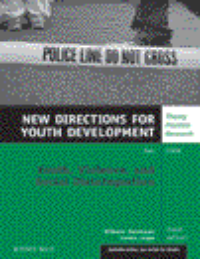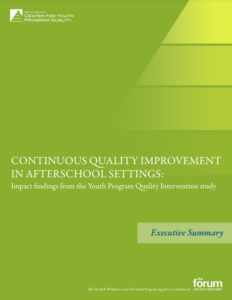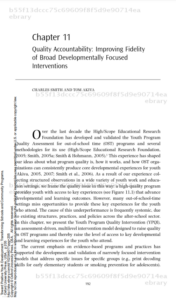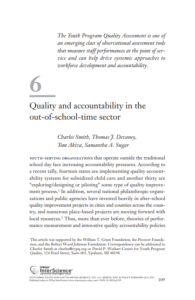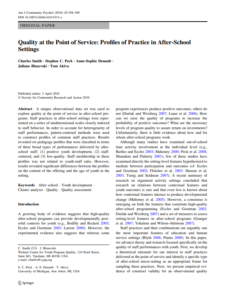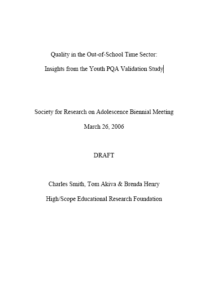Publications by Tom Akiva
Back to Publications
This research article discusses efforts to define and improve the quality of afterschool services, highlighting areas of agreement and identifying leading-edge issues. We conclude that the afterschool field is especially well positioned to deliver high-quality services and demonstrate effectiveness at scale because a strong foundation has been built for continuous improvement of service quality.
The David P. Weikart Center for Youth Program Quality conducted a three year intervention study to examine the Youth Program Quality Intervention (YPQI). The YPQI is a data-driven continuous improvement model for school and community-based sites serving youth during afterschool hours.
This paper uses pattern centered methods to describe the association between the quality of instruction available and youth’s level of mental engagement with that instruction.
A presentation of baseline and post-pilot program quality ratings for 38 after school programs participating in a pilot quality improvement system in Palm Beach County, Florida.
This chapter describes the Youth Program Quality Intervention (YPQI), a setting-level intervention model designed to raise quality in out-of-school time programs. The YPQI takes managers and staff from a network of youth programs through a process of identifying and addressing strengths and areas for improvement, using a standardized assessment tool.
In the fragmented OST sector, defining and measuring quality in terms of staff behaviors provides a common framework that can reduce obstacles to performance improvement and streamline data-driven accountability. This chapter views the point of service as the critical unit of study because it is ubiquitous across OST programs and because it is the place where key developmental experiences are intentionally delivered.
This paper uses pattern centered methods to identify three different quality profiles (high, medium, and low) that characterize staff instruction in out-of-school time programs.
Design theory and formative evidence to describe setting dynamics at two distinct levels, (1) the organization-level where professional learning communities are formed and (2) point-of-service level (e.g., classrooms) where professional staff and learners meet.
